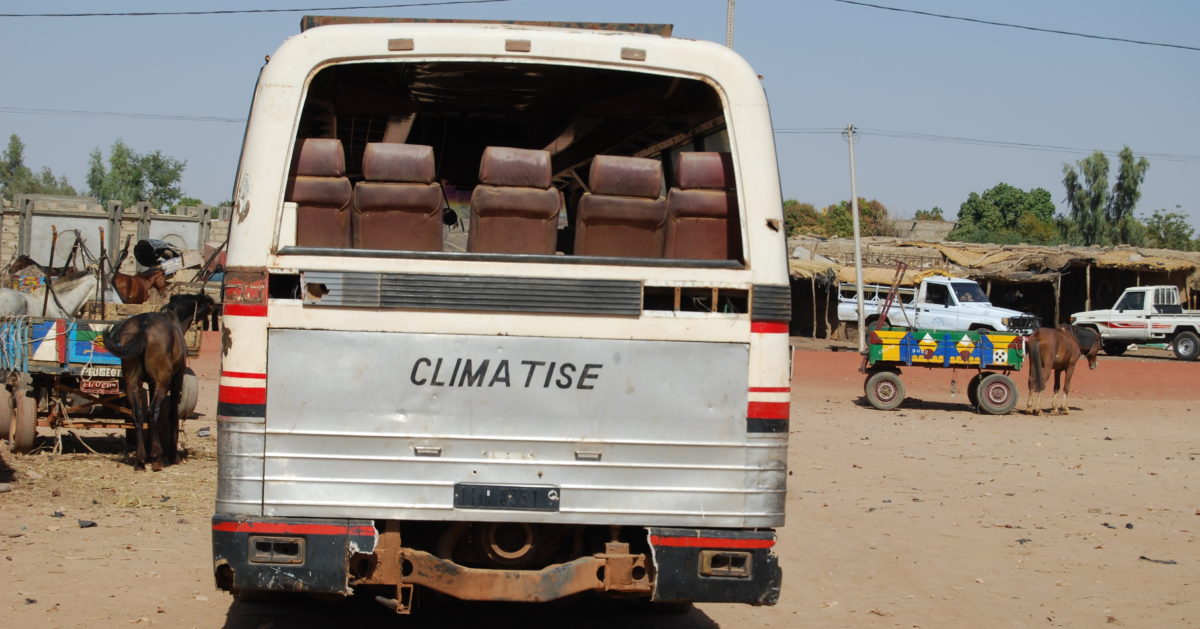Simon has hardwired a way to open and lock his door remotely via his phone, as well as get tea brewing and other manual and remote tasks. The video speaks for itself, so I’m not going to say anything other than to link you to my past thoughts on challenges for tech entrepreneurs in Africa.
Tag: kenya
Distilling water from volcanic steam vents
A unique water harvesting method has been devised in the drought ridden crater of Mt. Suswa, which is dotted with continuously puffing scorching steam vents.

Taking advantage of the steam vents that dot this landscape, local Masai have ingeniously tapped the vents for steam that is condensed on long plastic pipes that drip continuously into drums. The local Masai claim that these vents can fill half a drum (approx 30 lt) per hour (though it seemed very unlikely to us). The water is sweet and apparently it feeds a community of several hundred people and their cattle with fresh and clean water.
We saw at tens of these contraptions in a particular zone within the outer crater of Mt Suswa. All were protected from animals by thorn bushes. There seemed to be an ownership structure amongst the users, some were better constructed, had longer pipes, were better protected and maintained. We were told that the systems were installed fifteen years earlier and it did not look like any modifications had been done since then.
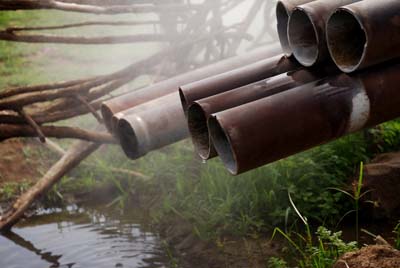
The water distilling system used here is permanent and produces a continuous supply of clean water that is collected regularly by the local community. The system we observed was in the area called Kishalu – just beyond a school. The system could be more efficient at trapping condensation – much steam was wasted as pipes were quite short, and collection drums were left uncovered and open to evaporation. The beauty of the system is that it works overnight. These water distilleries were introduced to enable the community to survive the dry season when rain water catchments had dried up.
The Suswa system is infinitely better than the water distilling process on the edge of Lake Elamentaita. Here the local Masai Women daily place a piece of zinc sheeting over a steam vent to capture condensation. They produce only 2 liters per day; a days work to produce enough drinking water for a small family for one day.
If there’s an Afrigadget award out there, the Suswa water distilleries deserve it.
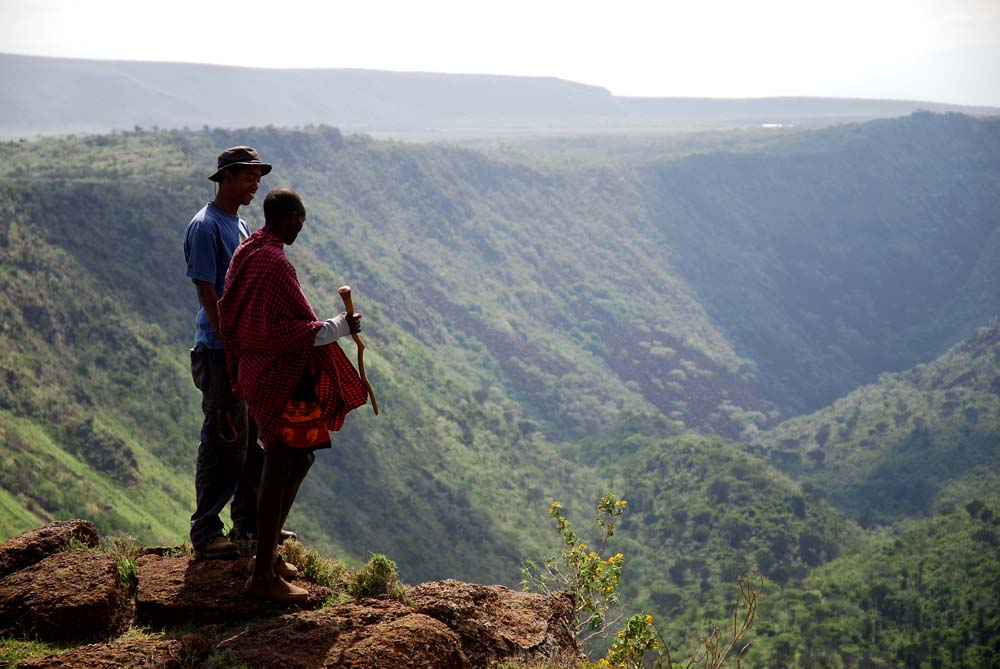
For more information about Mt Suswa check out Roving Rasta, and Wild about Africa for satellite images and details about hiking and caves
What Do You See?
I have a talk that I give when people ask me to speak on AfriGadget at conferences that is called, “What do you see?”. It’s a visual and interactive quiz where I take the audience through different images of AfriGadget and ask them what they’re looking at. It’s a lot of fun, and it proves to everyone why it’s so hard for people in the West to come up with contextually relevant life hacks in Africa.
Below are some images from an old family friend who has spent his life working in rural Southern Sudan and Kenya. Under each image you’ll see why it’s interesting. By the way, I too missed the relevance of the flip flops at first glance…
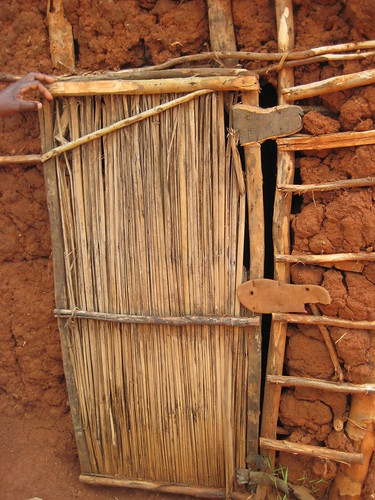
Making use of available resources for a hinge. I really like the way that Ben has used these old slippers and shoe for the hinge of his small kiosk/shop at Butere.
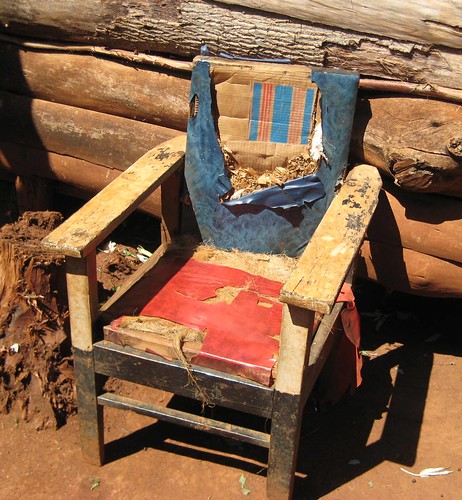
This old chair at Mahanga in Western Province shows the ingenuity of the local carpenters in making use of available resources, with the carton and stuffing from sisal and wood shavings.

Using available containers in a nursery for medicinal plants in Asembo area of Western Kenya.
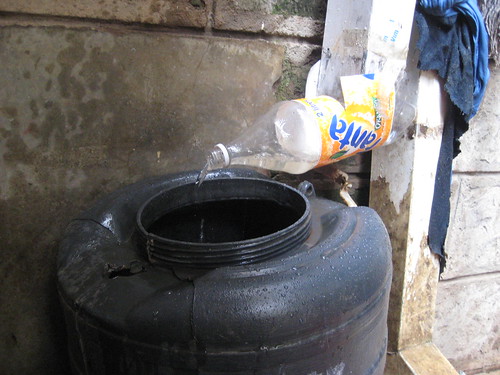
Making use of a Fanta bottle to channel water from the rainwater downpipe to a storage container in Nairobi.
A special thanks to Roger Sharland of REAP East Africa for sending in the pictures.
Turkana zipper head dresses
While visiting a rural community in the dry bushlands of Elementata I met some Turkana women who were absolutely captivating
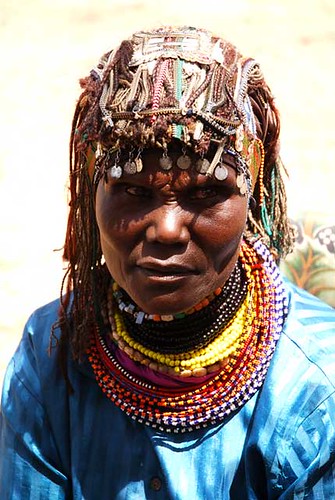
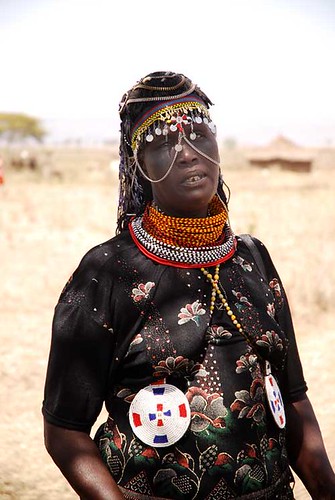
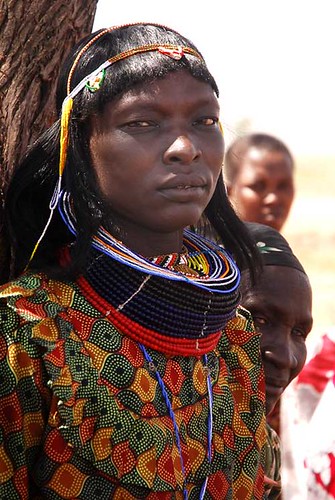
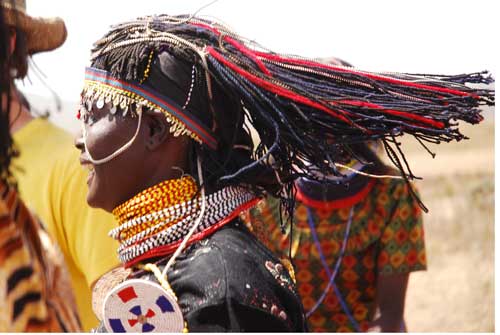
Did you notice the creative head dresses? Zippers may have been invented in USA but nobody would have imagined they’d be used for head dresses. I was so awed by the outfits that I forgot to ask where they got all those zippers from – I can’t get rid of the image of all the village men wondering about with gaping flies.
Cactus eating bull saves Kenyan drylands
Cows are playing an important role in land restoration in Baringo by eating up the invasive prickly pear cactus a nasty invasive plant that is destroying the drylands. It’s not obvious at all for cows to eat this thorny cactus, but Murry Roberts and his wife Elizabeth Meyerhoff told me about an amazing project that their organization, RAE (Rehabilitation of Arid Environments) has been working on. A few years ago they discovered that a local farmer had a bull that not only ate the nasty exotic thorny ugly, plant, but also taught other cows to go for it too.
- Mwalimu cow eating prickly pear
This is very surprising because any self respecting cow, a sheep or a goat will not touch the nasty prickly pear. The farmer had aptly named his cow Mwalimu (Mwa-lee-moo means Teacher in Kiswahili) because it taught other cows to eat the prickly pear .
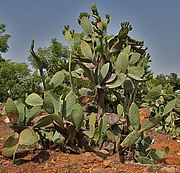

Prickly pear (Opuntia ficus indica) is origninally from Mexico and is an economically important species of cactus – the red/purple fruit known as tuna’s are much sought after in many parts of the world. It has been cultivated in many parts of Africa as a hedge, but has become a serious pest because it spreads rapidly degrading ranch lands, and is very difficult to control. As a result, Opuntia eating cows are hugely important in the drylands of Kenya.
How did this farmer get his cow to eat Opuntia? During the drought of 1999 – 2000 grassy fields were reduced to bare earth and cows had nothing left to eat were dying of starvation leading to widespread famine. The story goes that one farmer persuaded his bull to eat the leaves after he had burned off the thorns. Opuntia are 80% water and if one can get past the thorns, the plant is quite nutritious . The other starving cows watched the bull and then followed suit thus saving the herd and the farmer who has never looked back. The thorns are burnt off using wood from another nasty invasive species, Prosopis juliflora – making this an eco-friendly project all round.
As part of RAE’s rehabilitation of Baringo’s drylands, and to make multiply the value of mwalimu bull to other farmers RAE bought the bull and during droughts, Mwalimu goes from one homestead to another teaching herds of cattle how to eat Opuntia, thereby saving hundreds of cattle and people from starvation. For Mwalimu it’s a job that saved his life – he is too valuable to be turned into beef burgers!
The cutting and use of Opuntia and Prosopis is also important in controlling these invasive species which have been planted as live fences, but which are fast becoming weeds in the degraded Baringo lowlands. Apart from prickly pear eating cows RAE also restore grasslands and eliminate soil erosion in an innovative project that has huge application across the drylands of Africa. We met women who were doubling their money by buying and fattening cows on restored grasslands in a 3 month period!
For more information, check it out here RAE Trust
You can also contribute to the good work of RAE by helping us spread the word and share this great innovation through your blog, facebook, twitter, digg, or stumble. Thanks!

